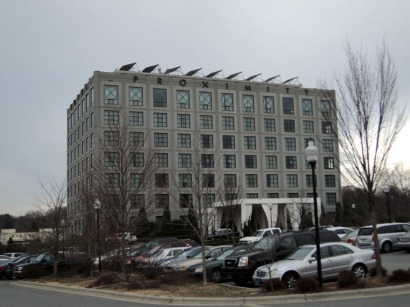
Many of us in the renewable energy business began our careers elsewhere – as architects, builders, engineers, researchers, and investors who recognized opportunities for growth in the renewable energy field and wanted to get in on the ground floor. Others began as entrepreneurs, tinkering in their basements or garages on Sunday afternoons. Our education was on-the-job, not in the classroom. But now that the field is more firmly established, formal education in renewable energy is sorely needed.
Colleges and universities are beginning to meet this challenge by incorporating renewable energy coursework into their curricula and degree programs, and several MBA schools have even developed a renewable energy specialization. There are also many related programs at community colleges and trade schools, including courses covering green building design and photovoltaic panel installation.
Businesses are getting involved too, by sponsoring student internships and by sharing their expertise with local educational institutions. As a professor at a major US research university, my students and I recently had the opportunity to visit one such business, the Proximity Hotel in Greensboro, North Carolina.
The Proximity is possibly the greenest hotel in the US, if not the world. It was the first US hotel to earn the Leadership in Energy and Environmental Design organization’s highest Platinum rating, and its accomplishments are impressive: a 40 percent reduction in energy costs compared with other hotels of the same size, 30 percent less water use, and 100 percent recovery of its energy efficiency investment costs in less than two years. (In just the first year, the 7,000 USD spent on water saving products during construction was more than offset by a 13,000 USD reduction in water utility costs.)
Convinced that a green hotel could be both comfortable and profitable, the developers included a wide range of innovative design features and state-of-the-art technologies. (See a detailed list by clicking here.) Impressed by the hotel’s accomplishments, President Obama selected the Proximity as his home base during a recent visit to central North Carolina.
The technology in use at the hotel is impressive, but there were other, more important, lessons for my students. Perhaps the most important lesson was that running a green business isn’t just about protecting the environment and preserving our natural resources; being green also makes good business sense. In this regard, the hotel is a huge success, with a steady stream of guests, weddings, business meetings, and other events.
Another important lesson for my students was that green, energy-efficient buildings can also be eminently comfortable, thanks to their big windows, natural lighting, and fresh air. Also, many clients feel good about frequenting a business that puts a premium on environmental stewardship.

Students at North Carolina A&T State University
Businesses like the Proximity have been reaching out to their communities, helping educate students and the public about renewable energy and green buildings. The visionaries who conceived of the Proximity’s business model got it just right – green is not only good for the environment, it’s good business too!
You can learn more about Greensboro and the Proximity Hotel in the Washington Post article, The Impulsive Traveler: Going Green in Greensboro, N.C., and by visiting the Proximity’s website. Read about Greensboro’s International Civil Rights Center and Museum here.

